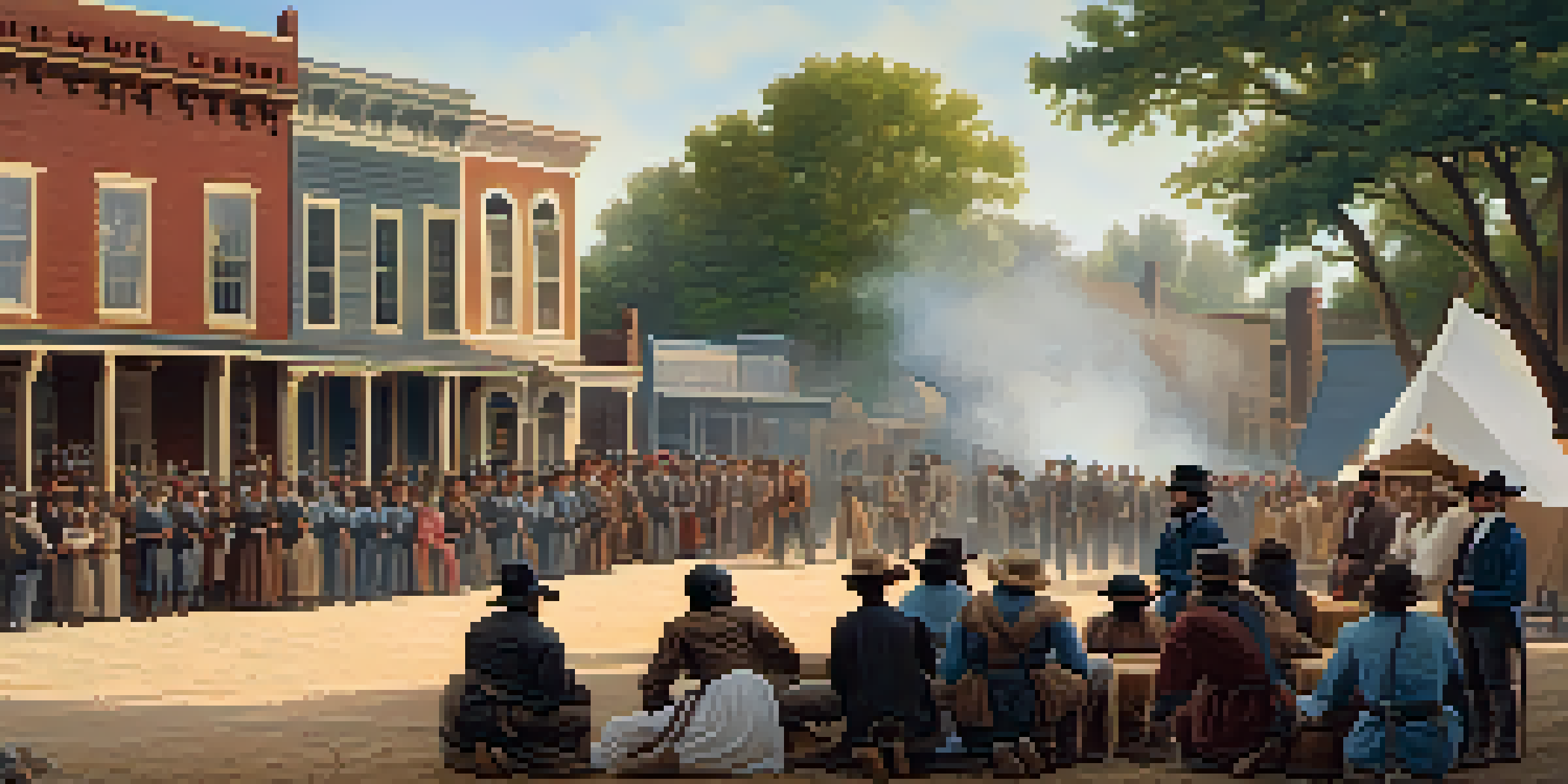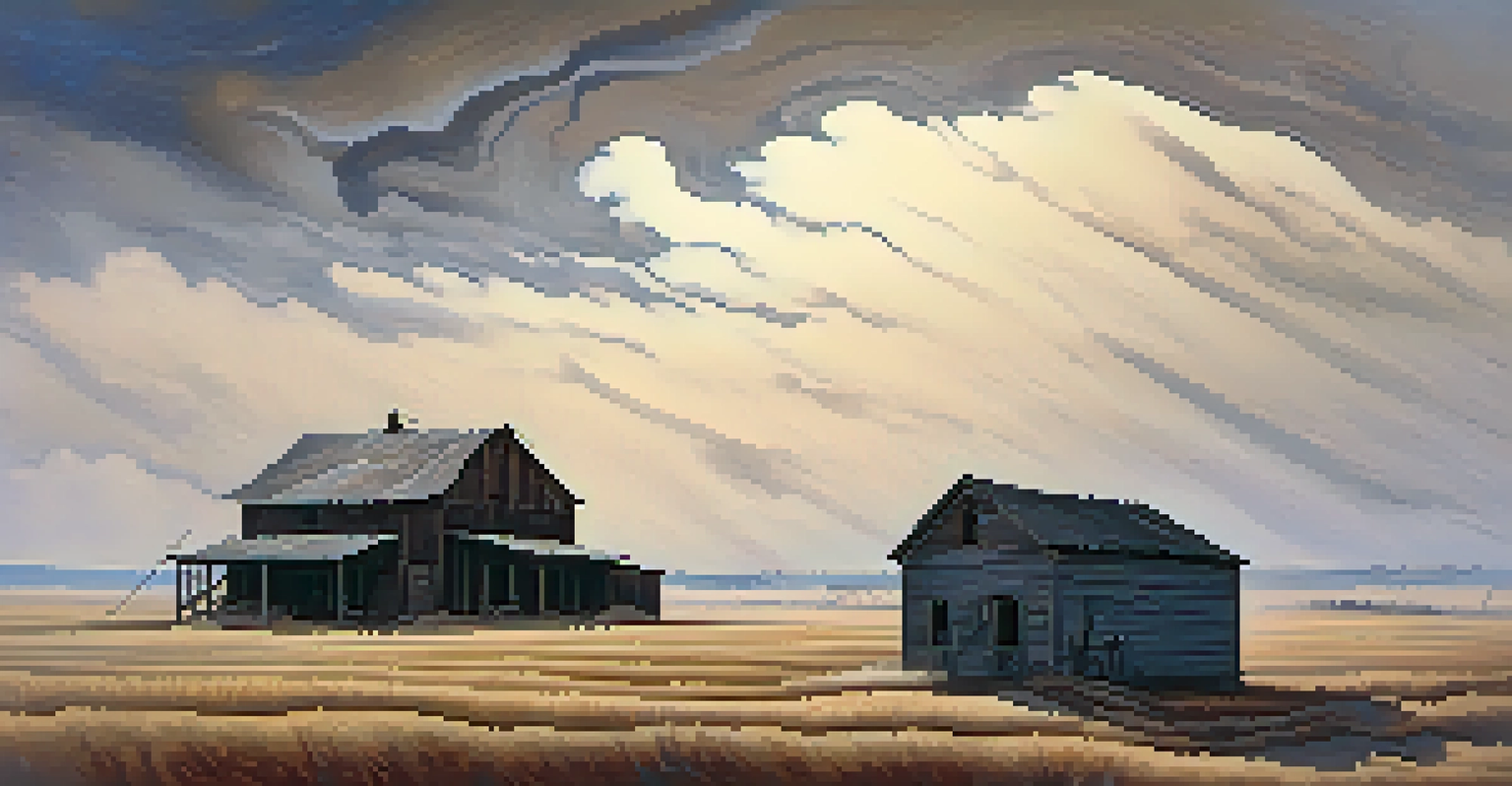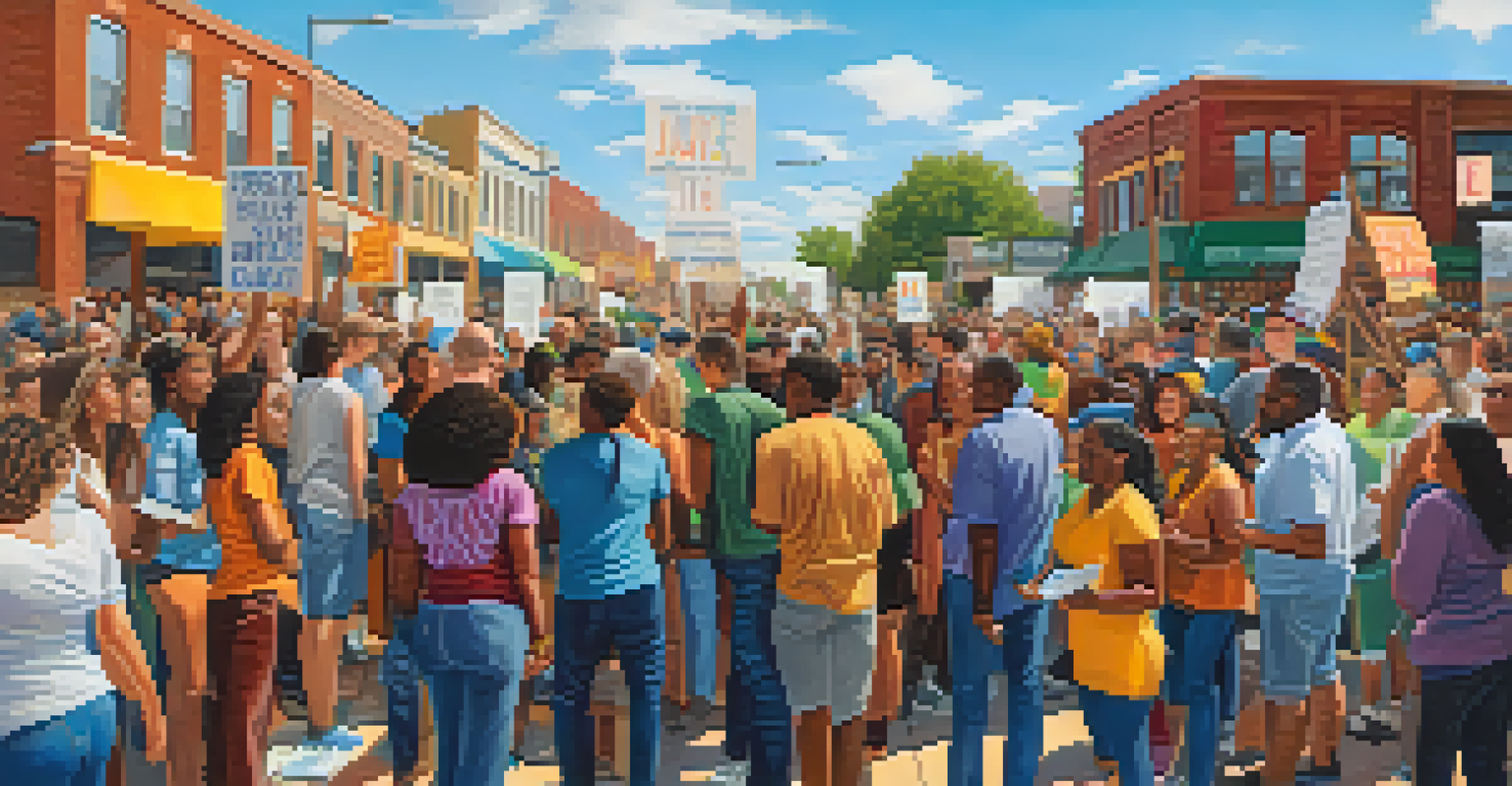Kansas Political Landscape: A Historical Perspective

The Birth of Kansas: A Political Battleground
Kansas emerged as a political battleground in the mid-19th century, especially during the debate over slavery. The territory became a focal point for pro-slavery and anti-slavery factions, leading to violent confrontations known as 'Bleeding Kansas.' These events set the stage for a polarized political climate that would influence the state for decades.
Kansas is a place where the future is shaped by the lessons of the past.
The struggle for Kansas statehood was not just about geography; it was symbolic of the larger national conflict. The tension between free-state advocates and pro-slavery settlers highlighted the deep divisions in American society. This era ultimately shaped Kansas' identity and its political leanings in the years to come.
As Kansas transitioned to statehood in 1861, the scars of conflict were still fresh. This tumultuous beginning laid the groundwork for a state that would often find itself at the crossroads of national political movements.
Populism and Progressivism: Kansas in the Late 19th Century
The late 1800s saw the rise of populism in Kansas, as farmers and laborers sought to address economic disparities. Figures like Mary Elizabeth Lease became emblematic of the Populist movement, calling for reforms that would support the working class. This grassroots activism underscored a growing discontent with the political establishment.

Progressivism soon followed, as reform-minded Kansans pushed for changes in government and society. Issues such as women's suffrage and prohibition gained traction, reflecting a desire for moral and social improvement. The state became a laboratory for progressive ideas, influencing broader national policies.
Kansas: A Battleground for Change
The state's history of conflict over issues like slavery and civil rights shaped its political landscape and identity.
The interplay between populism and progressivism demonstrated Kansas' unique position in American politics. These movements not only shaped local governance but also contributed to the national dialogue about reform and equity.
The Dust Bowl and Its Political Ramifications
The Dust Bowl of the 1930s devastated Kansas agriculture, leading to widespread economic hardship. This environmental disaster forced many residents to rethink their political affiliations and the effectiveness of government policies. It was a time when the state’s resilience was tested, and new leadership emerged.
In a democracy, the people get the government they deserve.
Farmers and displaced families began to advocate for more substantial governmental intervention and support. The crisis highlighted the shortcomings of the existing political structures, prompting calls for reforms that could better address the needs of struggling communities. This led to a shift in political power dynamics within the state.
As the New Deal programs rolled out, Kansas saw a surge in support for Democratic policies. This era marked a significant transformation in the political landscape, as the state began to align more closely with federal initiatives aimed at recovery and support for the disenfranchised.
Civil Rights Movement: Kansas Takes a Stand
The Civil Rights Movement of the 1960s found fertile ground in Kansas, with activists advocating for racial equality and justice. Events like the Brown v. Board of Education case, originating from Topeka, challenged segregation and ignited a national conversation about civil rights. This case illustrated how Kansas was at the forefront of pivotal legal battles.
Kansas activists, including notable figures such as Charles W. Scott, played crucial roles in the push for social change. Their efforts not only impacted local communities but also resonated across the nation, contributing to the larger civil rights narrative. The state became a symbol of progress and a beacon of hope for activists everywhere.
Political Shifts Reflect Diverse Voices
As demographics change, Kansas politics is evolving, with new issues and perspectives gaining importance in the public discourse.
As a result, Kansas' political landscape began to shift toward inclusivity and representation. The state's embrace of civil rights ideals reshaped its political affiliations and priorities, laying the groundwork for future movements and legislation.
The Modern Era: Shifts in Political Ideologies
Entering the 21st century, Kansas has experienced significant shifts in political ideologies, moving towards conservatism in many areas. The rise of the Tea Party and other conservative movements has influenced local and state elections, reflecting a broader national trend. This shift has sparked debates about governance and the role of the state in citizens' lives.
The political landscape has also been marked by a growing divide between urban and rural voters. While urban areas tend to lean Democratic, rural regions have increasingly supported conservative candidates. This geographical divide complicates the state's political dynamics and influences election outcomes.
As debates over issues like education, healthcare, and economic policy intensify, Kansas finds itself navigating a complex political environment. Understanding these shifts is crucial for grasping the broader implications for the state’s future and its role in national politics.
Key Political Figures in Kansas History
Throughout its history, Kansas has produced a number of influential political figures who have shaped its landscape. From early leaders like Governor John St. John, who championed temperance, to modern figures like Senator Pat Roberts, these individuals have left their mark on both state and national politics. Their legacies continue to influence current political discourse.
Women have also played pivotal roles in Kansas politics, from suffragists like Carrie Chapman Catt to contemporary leaders such as Laura Kelly. Their contributions have not only advanced the cause of gender equality but have also enriched the political landscape with diverse perspectives and priorities.
Key Figures Influence Political Trends
Influential leaders, both historical and modern, have played vital roles in advancing social causes and shaping political ideologies in Kansas.
These key figures have often reflected the evolving values of Kansans, leading to shifts in party affiliation and policy priorities. By studying their impact, we gain insight into how personal leadership can drive political change and inspire future generations.
The Future of Kansas Politics: Trends and Predictions
Looking ahead, Kansas politics is likely to continue evolving in response to demographic changes and shifting social values. As younger voters become more active, issues such as climate change, social justice, and education are gaining prominence on the political agenda. These trends suggest a potential rebalancing of traditional party lines.
Moreover, the increasing diversity of the population may lead to new political coalitions and alliances. As different communities advocate for their needs and concerns, the political landscape could become more inclusive, reflecting a broader range of voices and perspectives. This could lead to innovative policy solutions and a more engaged electorate.

Ultimately, the future of Kansas politics will depend on how well its leaders can address the pressing issues of today while honoring the state's rich historical legacy. Engaging with both the past and the present will be crucial for shaping a political environment that serves all Kansans effectively.